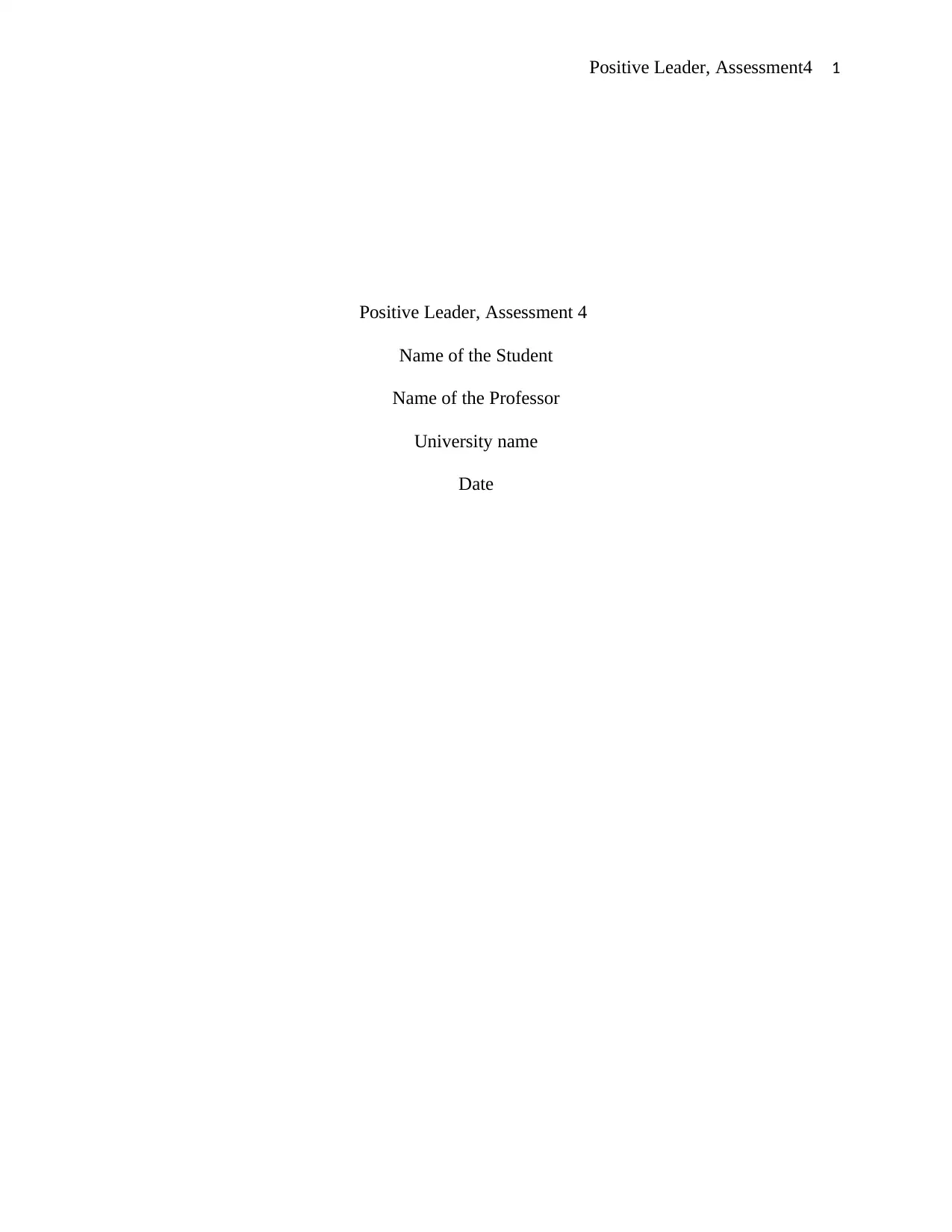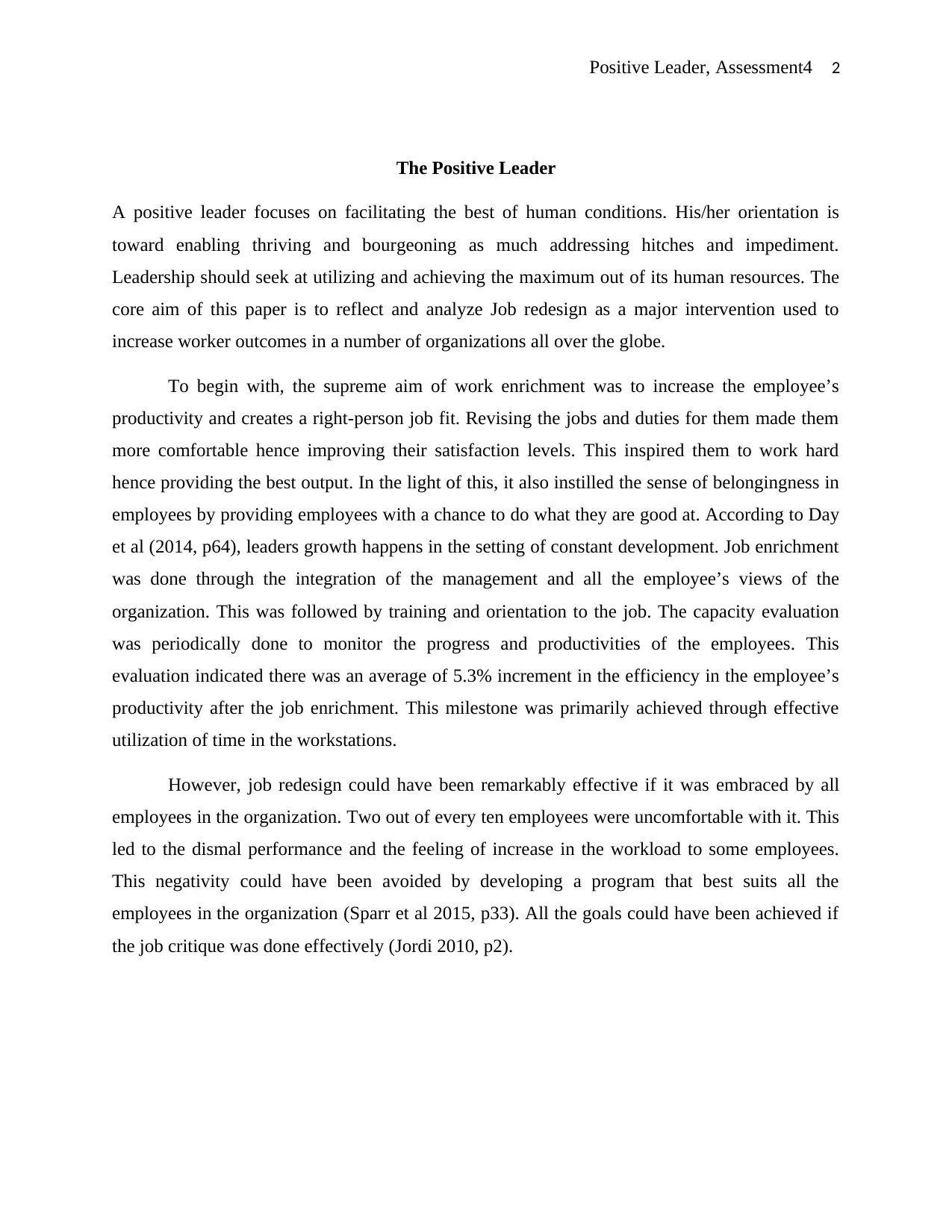MNG91211: Positive Leadership - Job Redesign & Employee Outcomes
VerifiedAdded on 2023/06/10
|3
|530
|81
Essay
AI Summary
This essay reflects on a job redesign intervention aimed at improving employee outcomes through the principles of positive leadership. It analyzes the impact of job enrichment, focusing on increasing employee productivity and creating a better fit between employees and their jobs. The reflection highlights a 5.3% increase in efficiency due to better time utilization, but also acknowledges that the intervention was not universally embraced, leading to discomfort and increased workload for some employees. The essay suggests that a more tailored program, incorporating feedback and addressing individual needs, could have improved overall effectiveness. References to Day et al (2014), Jordi (2010), and Sparr et al (2015) support the analysis of leadership development, reflection, and feedback-seeking behaviors.
1 out of 3










![[object Object]](/_next/static/media/star-bottom.7253800d.svg)